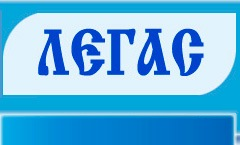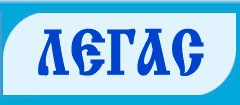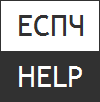Information wars / psychological operations and national security
Psychological operations, as noted, have the following goals to change the behavior of the audience, which would meet the national interests of those who generate this communication. There are clearly understandable general strategic guidelines that guide issues of information warfare.
B. Shvartau sees as a common goal the creation of a national information policy, and among the possible levels of use of information weapons are such:
personal information warfare, which includes various types of manipulation of personal electronic information:
corporate information warfare, which includes situations of attack of information systems of companies;
A global information war where information is seen as a national treasure that other countries can hunt for.
As you can see, this classification is based on the level of objects: from one person to the whole state. And this is a simple version of a possible classification, since it is purely formal in nature, and does not reveal the content.
M. Vickers considers the possibilities of information in two aspects: shape change and impotence. The first option involves maneuvers to mislead the enemy, the second - the impotence of its control centers. All this is due to interference in the information systems of the enemy. By the way, it is the entry into decision-making systems that is the main new goal of future soldiers.
According to D. Maklaurin, the non-differentiation of strategic and tactical psychological operations can lead to a decrease in their effectiveness.
In the case of strategic psychological operations, there is a wide range of possibilities. He considers the use of strategic concepts (like "American imperialists") by Vietnamese propagandists in leaflets against American soldiers to be erroneous, whereas survival issues should have been noted, which are more important for a soldier at the front. It should also be added that the attitude of the two different sides of the conflict to the concept of "American imperialists" will be different, and the problem of survival is neutral.
To. Lem believes that psychological operations are more difficult to perform in non-military situations, since there is a need for a dynamic response to tactical changes. Rapid changes in the situation require the same rapid changes in the conduct of psychological operations. Information wars fundamentally change the strategic and tactical principles of the modern army, without which it is impossible to further develop military doctrine.
In general, modern military doctrines, for example, the United States, are moving from the concept of information warfare to the concept of knowledge warfare, since information changes the knowledge on the basis of which certain decisions will be made. An example from recent history should be recalled: when perestroika changed the types of knowledge possessed by the mass consciousness, the latter began to make other decisions.
Asymmetric information impact.
Post-industrial countries have a fairly powerful information infrastructure, which makes them stronger in the field of information impact. At the same time, these countries are becoming more vulnerable to information weapons. The countries of the agrarian type of development do not have such infrastructure, therefore they are less vulnerable. But they can plan and carry out their actions to recover information impact on post-industrial countries.
We can talk about the asymmetric nature of information weapons, which allows, for example, terrorists to keep modern society in suspense: a small force - a large one. Another example is Nord-Ost, when a small group was able to govern (conditionally) an entire country by putting forward their demands (for example, holding a rally on Red Square).
It was about such an influence (albeit uninformational) that K. wrote.
Malaparte. His main idea is that the actions of the state can only be responded to inadequately, thanks to this they are nullified.
One can cite such an example from Chinese strategies, when a city, unable to defend itself from an advancing army, opened its gates and residents began to clean up something there. The army stopped and circled the city, because the commander thought: they probably have a strong army if they are not afraid of us. An inadequate action brought victory against a strong opponent. A symmetrical (adequate) response would only bring defeat.
In this case, the action should be informational in nature. We can formulate such a rule: the stronger the opponent, the more asymmetric the information action performed against him should be.
Today, a large number of such asymmetric behaviors have been developed, which have been called nonviolent protest actions. In total, there are 198 types of such actions in this list, some of which have been repeatedly implemented on the streets of Kiev and Minsk. These are tents, burning of effigies, starvation, and presenting flowers to law enforcement officers serving as law enforcement officers. J.
Sharp, who was the main developer of this direction, emphasized that his developments were used by the Polish Solidarity, the Baltic States during the withdrawal from the USSR, Yugoslavia during the struggle against S.
Milosevic.
The asymmetry of the action of information weapons can be seen, for example, in a situation of influence on the enemy, when they convince him to surrender. A soldier in such a situation receives significantly more propaganda messages supporting his actions, and only one message in the form of a leaflet can cause his opposite actions. Only an asymmetric information impact can work against mass propaganda. But it must have a different qualitative level, which will allow us to defeat the system of influence of the other side.
By the way, F. Fukuyama called the impossibility of legitimate expression of negative assessments among the reasons that led to the collapse of the USSR.
The success of the information weapon, we can assume, lies in the degree of its asymmetry. Asymmetry is realized when the vulnerabilities of the attacked system are known.
The asymmetry of the action of information weapons is especially evident in negative contexts. These may be, for example, accusations or denials, to which modern society reacts rather inadequately. We are able to generate positive contexts and are not able to work with negative contexts, which always present difficulties. For example, there was such an order for one of the firms in St. Petersburg: to develop an ethical option for refusing sponsorship. Giving money is always more pleasant than refusing it, so this particular task requires special communicative training.
Generating negative contexts requires special skills, and therefore a separate specialization. In the American communication space, the profession of a spin doctor (spin-doctor), one of the tasks of which is to correct the situation if it begins to acquire unwanted media coverage. Or he does his job even before the event has occurred in order to prevent incorrect media coverage of it.
D. Watts, quoting other researchers, counts five types of ”spin”, i.e., "bending" the situation in order for it to take the right shape:
1) Pre-spin preparation before the event;
2) After-spin - shine on the event;
3) Tornado spin is an attempt to direct interest to something that does not really cause it;
4) crisis control - management of events that get out of control;
5) Loss reduction - management of events that have already gotten out of control in order to reduce further losses.
Spin doctors work as part of a media team. For example, it was spin doctors who prepared B. Clinton's "remorse" in 1998 about his ties with Monica Lewinsky. As a result of the speech, the population changed their negative attitude towards B. Clinton. The speech of the American president took place only when the population was ready to forgive him, considering words of repentance sufficient for this.
The spin doctor prepares an upcoming event in the information space, or corrects a situation that is not properly covered in the media. This is an active informational behavior that can fundamentally influence the development of events in the information space.
Asymmetric information actions have a better chance of success because they cannot be matched. For example, in Nixon's case, rational accusations were dismissed by an emotional counteroffensive, i.e., really in a different plane. Asymmetry is the only way to perform against a strong opponent. For psychological warfare, this becomes the norm, because in this case we are talking about generating a communicative message that acts as a "loner" against the enemy's propaganda army.
Demonstrations and demonstrations, which are widely used today to organize influence on government structures through public opinion, can be considered another variant of asymmetric information action. The authorities do not have the opportunity to respond to them symmetrically, that is, by conducting their own demonstration.
This implies the fundamental asymmetry of their actions. For example, such a variant of a communicative action as fasting is common, which is used as a manifestation of protest.
Asymmetric information actions may also become possible because the enemy may not "notice" them at the decision-making stage, since they are hidden from him. In general, one of the features of information weapons is the possibility of its unnoticeable use, when the country may not see this planned influence until the last moment.
Asymmetry can work in a specific model of presenting a politician's speech on television, when the audience's inattention to him is demonstrated or when the journalist's comments overlap the politician's speech. This is all the same generation of information in an asymmetric plane, the possibilities of which, as we see, are quite large.
From history.
Historically, we are interested in those stages of development or communicative genres where appropriate professionalization of communication takes place. If we look at the main components of the communication process (communicator, communication process, recipient of information), then we are interested in when (and why) a professional communicator, professional transmission and professional conditions for the perception of a message arise. There are special conditions that set the possibility of the communication process.
Professionalization of one component, as a rule, causes professionalization of others.
Among the genres that have already been professionalized, religious, literary, managerial (including military), and propaganda communication can be noted. Take, for example, religious communication. It is characterized not only by a special communicator, but also by special conditions set in space (temple) and time (services). Preaching in a temple in the Middle Ages was at the same time a variant of a means of communication, since it served the function of informing the population about events that took place in the world. Military communication, like other types of communication, tries to program the soldier's behavior options, for example, orders are not discussed. All these are not just communication processes, they simultaneously perform the functions of social management. It is in them that we move from a random solution to a systematic, professional solution.
As an example of one of the first options for such a solution, which the modern world relies on, consider Ancient Rome. In both peaceful and military life, he implemented many communication models that are familiar to us today. For example, it was in Ancient Rome that variants of the first electoral technologies were used. The morale of the soldiers was also maintained quite intensively.
To be successful, the war had to be considered fair.
The battle was necessarily preceded by the performance of the commander, who was supposed to make the soldier truly brave, bring him to a high level of readiness for battle. The Romans mastered the art of oratory in order to be able to defend themselves in court, because in some periods the ancient law of Cynthia was in force, according to which speakers were forbidden to accept gifts or money for speaking in court. So, if you don't protect yourself, no one will protect you.
The triumphs that accompanied the victories of the Roman emperors had a significant propaganda influence. The legions received money and land, and the population celebrated the victory for weeks. Emperors were depicted on coins, which made it possible to conduct visual propaganda.
Civilization is constantly using new and new means of visual communication for propaganda for soldiers.
Mankind has invented book printing as a new communicative way of obtaining identical copies of one text - the Bible. By the way, universities are also established during this period so that everyone can receive the same education. There is a propaganda element in this: the generation of identical messages by all possible channels at that time.
By 1500, books were already being printed in 250 European cities. St. Augustine wrote that in his time, for the first time, monks learned to read not aloud, but to themselves.
A new communication channel appears, which also immediately begins to serve ideological purposes.
The Reformation was the first printing war.
Luther wrote 30 pamphlets, which were bestsellers at that time, so they sold out in large editions. For example, his third treatise had a circulation of 300 thousand copies, which is a lot even for today. Hence the problem of control arises: in 1559, an index of banned books was compiled in Rome. Luther also applied appropriate spectacular actions, not just texts, to draw attention to his cause.
For example, in 1617 he nailed his ninety-five theses to the door of the church in Wittenberg. Perhaps, in an illiterate society, such an action should make a greater impression on citizens than just the release of pamphlets.
Napoleon also actively used visual communication (coins, medals, statues). An appropriate image of the soldier-emperor was created in society. The image of Napoleon was helped to create by the artist Jacques Louis David, who developed models of clothes and hairstyles that became a symbol of Napoleon. During his coronation in 1804, Napoleon received the crown from the hands of Pope Pius VII, which also became a great propaganda event.
Napoleon paid considerable attention to his communications, for example, he told his newspapers not only what they should write about, but also what they should keep silent about. Therefore, until 1810, he had only 4 newspapers left (before that, in 1789, 60 new newspapers began to appear). Napoleon was engaged in counter-propaganda, was among the first to use what later became known as black propaganda: he published newspapers in occupied German territory, a pseudo-English newspaper in Paris, which he controlled himself.
We see that in all these cases it is required to provide information in a form that better affects its positive perception. Only the form in this case becomes a new content or a new context, to which the consumer of information is attuned.
In Russia, during the time of the emperors Peter and Paul, interesting variants of visual communication were also used. In the first case, there was a struggle with clothes in favor of German. But this visual difference was not so easy, because in the churches of that time the devil was depicted in a German dress.
Merchants who traded in Russian clothes were sent to hard labor. Under Pavel, there was already a struggle with the French dress as too revolutionary.
This is a struggle with form, which is perceived not as form, but as content. Quite often in Soviet times, this kind of ideological struggle took place: with ties, with jeans, for example, which were considered as a manifestation of bourgeois ideology.
Visual propaganda has the following advantages: it is universal (it is understood regardless of language skills) and long-term.
As psychological experiments prove, visual messages are better remembered and stored in memory longer.





